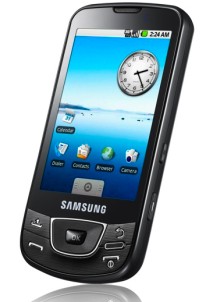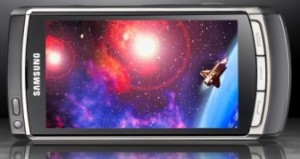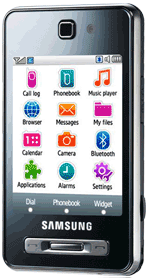 Here’s an interesting jab at Google and its mobile operating system Android: Verizon, the No. 2 U.S. carrier, is joining the LiMo Foundation because it has software and phones available, Google does not.
Here’s an interesting jab at Google and its mobile operating system Android: Verizon, the No. 2 U.S. carrier, is joining the LiMo Foundation because it has software and phones available, Google does not.
 The LiMo Foundation, representing Linux Mobile, is the lesser known of the mobile operating systems. There’s Microsoft’s Windows Mobile, supplying many makers of smart phones; Symbian, supplier mostly to Nokia; Qualcomm, supplier mostly to Verizon; upstart Google, and Apple. Then there’s Linux Mobile, slowly creeping along by adding devices mostly in Europe and Asia.
The LiMo Foundation, representing Linux Mobile, is the lesser known of the mobile operating systems. There’s Microsoft’s Windows Mobile, supplying many makers of smart phones; Symbian, supplier mostly to Nokia; Qualcomm, supplier mostly to Verizon; upstart Google, and Apple. Then there’s Linux Mobile, slowly creeping along by adding devices mostly in Europe and Asia.
The LiMo (Linux Mobile) Foundation is a consortium of companies well vested in the mobile industry: Motorola, Samsung, LG Electronics, Vodaphone, NTT DoCoMo, and many others. Verizon is the first U.S. carrier to join the LiMo initiative, which now has 40 members worldwide.
The idea behind LiMo is to build a standardized, Linux-based mobile platform, which members can customize to meet their needs. For the most part, Linux Mobile is a competitor to Android, which is not yet available on any handsets. Linux Mobile is showing up on phones from Motorola, NEC, Panasonic, Samsung, and LG.
Kyle Malady, vice president of network for Verizon, said in a conference call today that he expects Verizon to sell both regular devices and smart phones using mobile Linux next year.
“We expect that Linux Mobile will rapidly become our preferred operating system,” Malady said to The Associated Press [via The New York Times] . “As the development community looks at how best to bring new applications to the marketplace, they should check out LiMo and Linux Mobile first.”
Continue reading »
 I’m not entirely sure who the Samsung Galaxy Note is aimed at, but as somebody who gets to observe from the sidelines, this is one fun, functional and loveable device — although it comes at an out of contract price of around £450-500 upwards, give or take.
I’m not entirely sure who the Samsung Galaxy Note is aimed at, but as somebody who gets to observe from the sidelines, this is one fun, functional and loveable device — although it comes at an out of contract price of around £450-500 upwards, give or take. The open source format is fast becoming the standard for Blu-ray rips and, like DivX/Xvid before it, the main choice for sharing pirated movies via the Internet. Only in this case they are in full HD. That’s something that Samsung, understandably, doesn’t quite say.
The open source format is fast becoming the standard for Blu-ray rips and, like DivX/Xvid before it, the main choice for sharing pirated movies via the Internet. Only in this case they are in full HD. That’s something that Samsung, understandably, doesn’t quite say.  When Chumby, makers of the boutique gadget of the same name (a sort of cross between an alarm clock radio and digital picture frame, housed in a leather ‘bean bag-esque’ casing), announced that is was porting its widget-based platform to third-party hardware,
When Chumby, makers of the boutique gadget of the same name (a sort of cross between an alarm clock radio and digital picture frame, housed in a leather ‘bean bag-esque’ casing), announced that is was porting its widget-based platform to third-party hardware,  When I
When I  It’s now official: The Palm Pre will launch exclusively on Telefonica-owned O2 here in the UK.
It’s now official: The Palm Pre will launch exclusively on Telefonica-owned O2 here in the UK.
 Unveiled at this year’s Consumer Electronics Show (CES), Yahoo’s “Widget Channel” for Internet-connected televisions has debuted on high end sets from Samsung,
Unveiled at this year’s Consumer Electronics Show (CES), Yahoo’s “Widget Channel” for Internet-connected televisions has debuted on high end sets from Samsung,  Not content with competing on megapixels alone, the
Not content with competing on megapixels alone, the  Tocco is the Italian word for touch, and as you may have guessed, the Tocco SGH-F480 is Samsung’s latest touchscreen phone to hit the market. Once again, comparisons to the iPhone are inevitable, and although the Tocco is no iPhone killer – not that such a thing exists – it does sport at least a couple of features – haptic feedback and a 5 megapixel camera – that better Apple’s iconic device.
Tocco is the Italian word for touch, and as you may have guessed, the Tocco SGH-F480 is Samsung’s latest touchscreen phone to hit the market. Once again, comparisons to the iPhone are inevitable, and although the Tocco is no iPhone killer – not that such a thing exists – it does sport at least a couple of features – haptic feedback and a 5 megapixel camera – that better Apple’s iconic device.
